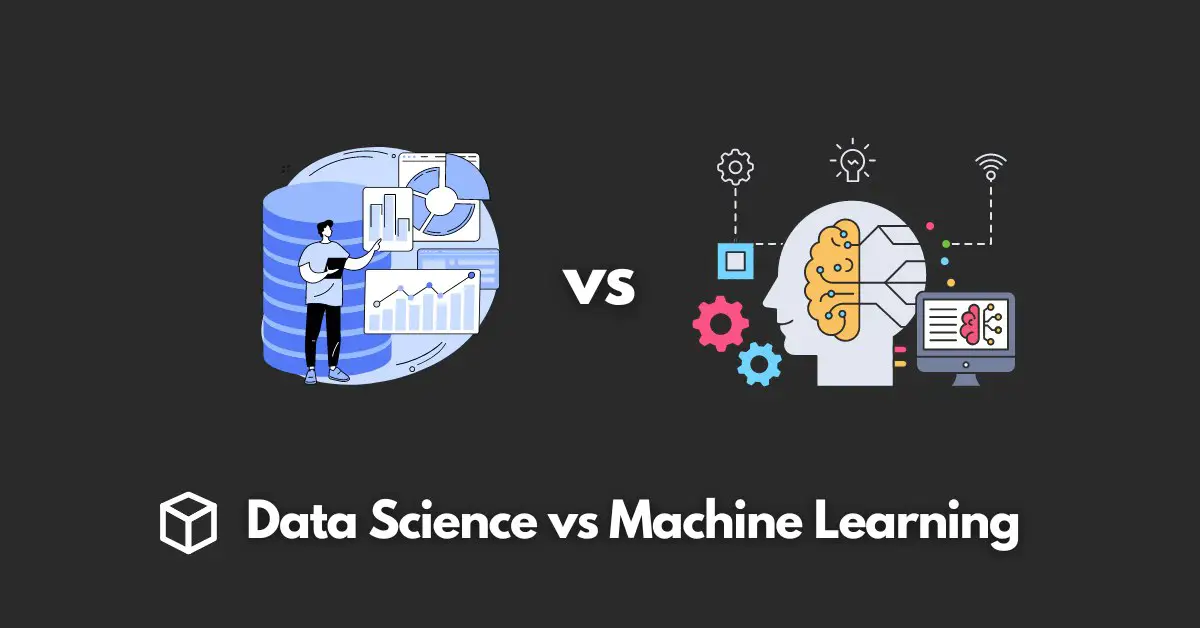In today’s fast-paced world, data is being generated at an unprecedented rate.
From social media to e-commerce, every interaction leaves a digital footprint, creating a vast amount of data.
To make sense of all this data, businesses and organizations are turning to Data Science and Machine Learning.
But what exactly are Data Science and Machine Learning, and how do they differ?
In this article, we’ll explore the key differences between Data Science and Machine Learning and the ways in which they overlap.
What is Data Science?
Data Science is a multidisciplinary field that involves using scientific methods, processes, algorithms, and systems to extract knowledge and insights from structured and unstructured data.
The goal of Data Science is to make predictions, identify patterns, and uncover insights that can inform decision-making.
The Data Science process typically involves the following steps:
- Data collection: Gathering data from various sources such as databases, sensors, and social media.
- Data cleaning: Removing or correcting any errors or inconsistencies in the data.
- Data analysis: Exploring the data to identify patterns, trends, and insights.
- Modeling: Building mathematical models to make predictions or identify relationships in the data.
What is Machine Learning?
Machine Learning is a subset of Artificial Intelligence that involves training computers to learn from data, without being explicitly programmed.
The goal of Machine Learning is to build models that can make predictions or decisions without human intervention.
There are three main types of Machine Learning:
- Supervised Learning: Where the computer is given a dataset of labeled examples (i.e., the correct answers are provided) and the computer learns to make predictions based on those examples.
- Unsupervised Learning: Where the computer is given a dataset of unlabeled examples and the computer must find patterns or structure in the data without any guidance.
- Reinforcement Learning: Where the computer learns by interacting with its environment and receiving feedback in the form of rewards or penalties.
Differences between Data Science and Machine Learning
While Data Science and Machine Learning have some similarities, they are not the same thing. The main difference between the two is the scope of their focus.
Data Science is a broader field that includes Machine Learning, but also encompasses other areas such as statistics, data visualization, and domain expertise.
Data Science is focused on extracting insights and knowledge from data, while Machine Learning is focused on building models that can make predictions or decisions.
Another difference between the two is the techniques they use.
Data Science often involves a combination of statistical and machine learning methods, as well as data visualization and domain expertise.
Machine Learning, on the other hand, primarily uses algorithms and statistical models to make predictions.
Finally, the end goals of Data Science and Machine Learning are also different.
Data Science aims to inform decision-making and uncover insights, while Machine Learning aims to automate decision-making and make predictions.
Applications of Data Science and Machine Learning
Data Science and Machine Learning have a wide range of applications across various industries. Some examples include:
- Natural Language Processing (NLP): Data Science and Machine Learning techniques are used to analyze and understand human language, which is used in applications such as chatbots and language translation.
- Computer Vision: Machine Learning algorithms are used to analyze and understand images and videos, which is used in applications such as image recognition and self-driving cars.
- Predictive Modeling: Data Science and Machine Learning techniques are used to make predictions about future events, which is used in applications such as stock market prediction and fraud detection.
In healthcare, Machine Learning is used to analyze medical images, predict patient outcomes, and identify high-risk patients. In finance, Machine Learning is used to detect fraudulent transactions, predict stock prices and assist investment decisions.
In e-commerce, Machine Learning is used to recommend products to customers and optimize pricing strategies.
Conclusion
In conclusion, Data Science and Machine Learning are two closely related but distinct fields.
Data Science is a broad field that encompasses Machine Learning, but also includes other areas such as statistics and domain expertise.
Machine Learning is a subset of Artificial Intelligence that focuses on building models that can make predictions or decisions without human intervention.
Understanding the key differences between Data Science and Machine Learning is important in order to determine which approach is best suited for a particular problem or industry.
The two fields are complementary and work together to provide a comprehensive solution for extracting insights and knowledge from data.




